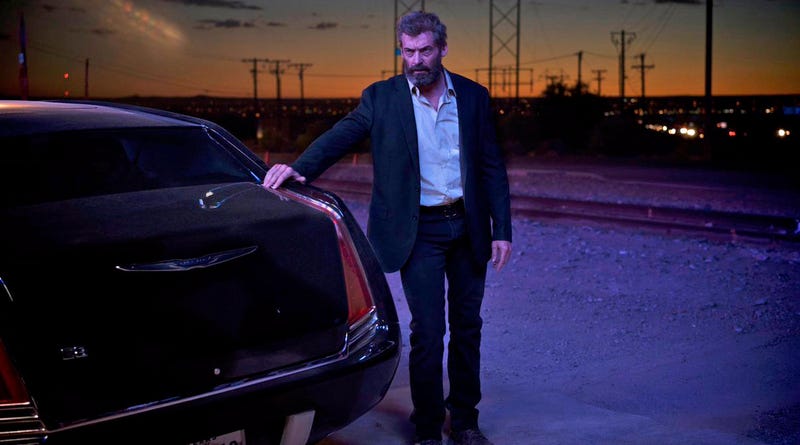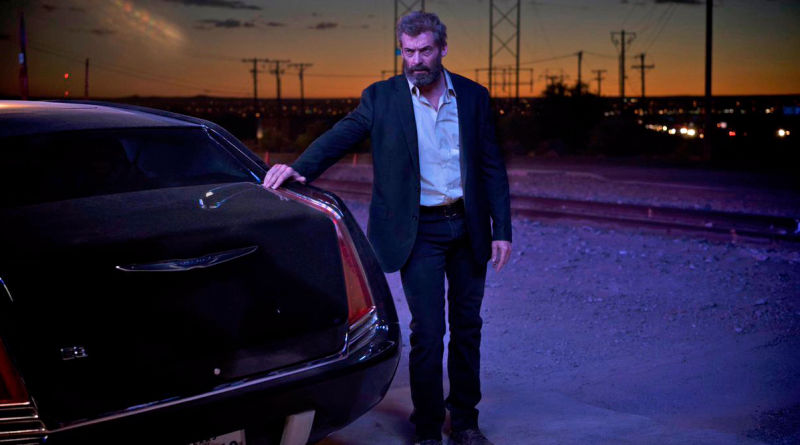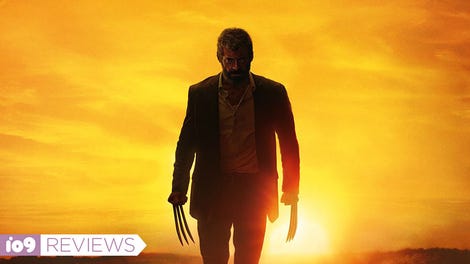
If you want to see a superhero movie, go see Captain America. If you want to see a Western, go see The Magnificent Seven. If you want to see a road movie, go see Mad Max: Fury Road. If you want to see a superhero Western road movie that’s also set in the future, go see Logan. The cars themselves are worth it, and their designers told Jalopnik just how much thought and work went into making them feel real.
Advertisement
Warning: this post contains some spoilers.
Directed by James Mangold (The Wolverine, Girl, Interrupted), the latest film in the X-Men series follows an aged Wolverine in the year 2029. He’s living off the grid with Charles Xavier as a limousine driver. After a mysterious young mutant named Laura appears in their lives, they attempt to escape from and ultimately kill the shit out of a group of scientists and a band of cyborg mercenaries intent on capturing them. It was fucking fantastic.
Advertisement
Recently, I was able to speak with artist and designer Nick Pugh, who headed up the film’s automotive creative team and worked closely with the production designer, François Audouy. We chatted about each of the film’s cars and how had they had been crafted to fit the style and feel of Logan.
Chrysler Limo
The limousine had been in the story since the beginning as a standalone character, as opposed to a simple vessel or prop. Pugh and his team envisioned something like a Lincoln Continental limo—simple lines, a bold shape and masculine-looking. Something big and grandiose. In the end, the Chrysler 300 fit the mold.
Fully running 2015 or 2016 model year Chrysler 300 limos were used in the film. Challenges arose when the design team was trying to figure out how to give the car their desired body shape while simultaneously not compromising its unibody structure.
Ultimately, they had to wrap the Chrysler’s body in a bigger skin that went over most parts of it. The resulting car was much larger and fatter, so the wheels and tires had to be enlarged accordingly.
The reason for the skin, aside from aesthetic purposes, was that it worked just like a layer of makeup for the car. There were different body panels that had been distressed or shot up or dirtied that the crew could just attach to the car to make it look like it just went through hell. There was no need to smash up anything for real in case a scene needed to be reshot.
The “hero” limos, as Pugh called them, didn’t participate in the heavier and more extreme stunts—like crashing through a fence and jumping over stuff. That was a job for the 500-horsepower, fully custom-built stunt car. “It has nothing to do with the Chrysler 300,” Pugh said, “it just has the same body panels as the limo.”
Advertisement
Sponsored
But because the shots that the stunt car appeared in were so kinetic, it could get away with looking like a type of “rough draft” of the other limos. It had no interior, only one seat, a full tube frame and about 18 inches of suspension travel on the front and rear. Underneath the Chrysler body panels, it looked like a Baja truck, Pugh told me.
Pugh also explained that the actual look of the limo grappled with a few requirements. Because Logan was so character-driven, Logan himself was the primary focus. Other aspects of the film weren’t really supposed to steal his thunder and reduce the overall grittiness of the film’s sentiment.
“The imperative… was not to draw attention to itself,” said Pugh. “The challenge was, ‘How do you make something different that doesn’t look familiar, that looks sort of a little ahead, but doesn’t take away from the idea and sort of character of the story or the essence of the story?’”
Advertisement
The resulting design grew from what the team supposed an eventual evolution of current automotive trends and architecture would look like. A conservative look, specifically. In the movie, Logan’s car was at least five years old, so it couldn’t look brand-spanking new. He was trying to lay low, staying below the radar, working as an anonymous limo driver. A flashy, futuristic and super advanced car wouldn’t fit that narrative.
“The choices we made,” Pugh continued, “were sort of a struggle between our desire to go very far out and futuristic and then the need for the story to actually downplay the sort of key aspects of what we could present.”
Reaver Cars
In the comics, the Reavers were humans who had “bionic implants to enhance various aspects of their physiology.” Half human and half robot. As the primary antagonists in Logan, it was only fitting that they’d have their own vehicles to reflect that.
Advertisement
Advertisement
The Reaver cars and trucks were skeletal and actual stunt cars in real life, built on giant 4×4 chassis. The hero car was a Ram 1500. Others included a Jeep Cherokee.
Pugh was adamant that the look of these vehicles remain unmilitarized. The Reavers were not part of the military, they were a private group of paid mercenaries being hired by a corporation.
In particular, the command center truck that held Caliban, an albino mutant, captive began its life as a yard goat truck, where its only function was transporting shipping containers from the crane off the ship and onto a waiting truck.
Advertisement
Pugh said that it was a particularly good find from art director Luke Freeborn because the yard goat both fit the film’s requirements and provided a fiscally beneficial option.
After fitting the appropriate body panels onto it, the team created a high-tech interior that matched the style and attitude of the Reavers.
Autonomous Trucks
Pugh revealed what I thought was perhaps the most interesting part of devising cars for Logan. Because the film was set in 2029, the conversation about autonomy had to be addressed. But exactly how autonomous would Logan’s setting look? Where would it be most noticeable?
Advertisement
Advertisement
To answer these questions, the team had to answer an even more basic question: what industry would most likely be fully autonomous by the time 2029 rolled around? The answer lay in trucks and tractor trailers.
They toyed with the idea of driverless cars but ultimately decided that, from a designer’s standpoint, the look of a self-driving truck would be far more dramatic than that of a self-driving car. Today, the cabin of the truck looks the way it does because there needs to be a driver. But once you remove the human element, the design of the truck could really be whatever you imagine it to be.
“They’re supposed to be very impersonal,” Pugh explained. “They’re supposed to represent this conglomerate mega corporate entity that doesn’t care about humans or their health. They have to be very menacing.”
Advertisement
The ensuing autonomous truck was just a container with two little robot bottom parts that had wheels with motors on them. They could link up and trail 20 containers at a time or just tow one.
The scene with the autonomous trucks is short, but it’s poignant—giving us a taste of the highly efficient future in store for American roads. But man, does it look lonely.
If you haven’t seen Logan yet, I highly recommend it. Just don’t bring your kids, unless you’re okay with them seeing guys getting their heads ripped off.
What Exactly Are You A Professor Of, Mr. Logan?
















